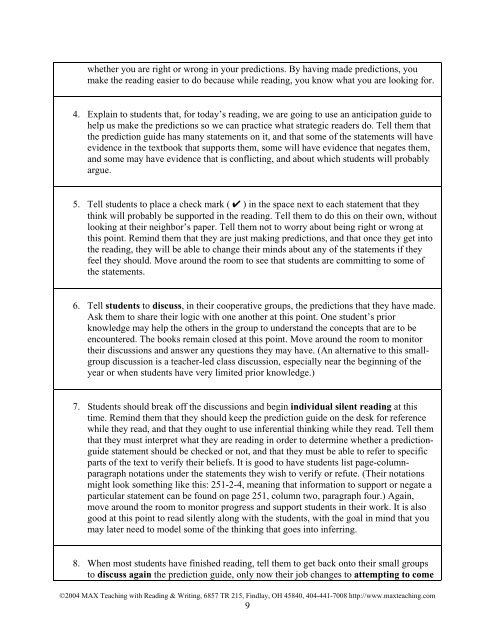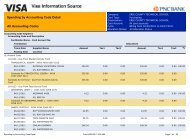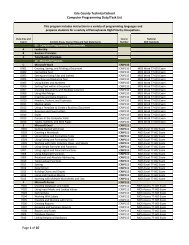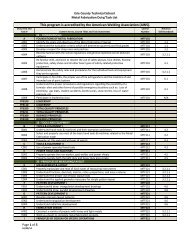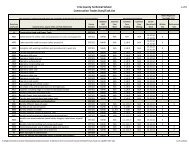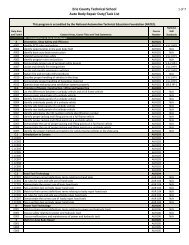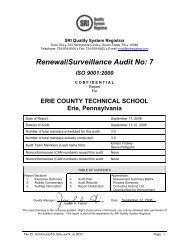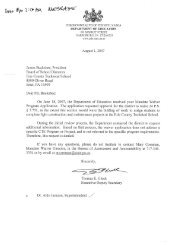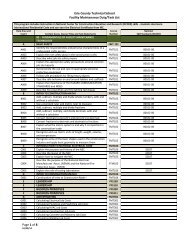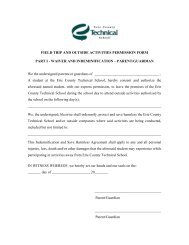MAX Teaching with Reading and Writing - Ects.org
MAX Teaching with Reading and Writing - Ects.org
MAX Teaching with Reading and Writing - Ects.org
Create successful ePaper yourself
Turn your PDF publications into a flip-book with our unique Google optimized e-Paper software.
whether you are right or wrong in your predictions. By having made predictions, youmake the reading easier to do because while reading, you know what you are looking for.4. Explain to students that, for today’s reading, we are going to use an anticipation guide tohelp us make the predictions so we can practice what strategic readers do. Tell them thatthe prediction guide has many statements on it, <strong>and</strong> that some of the statements will haveevidence in the textbook that supports them, some will have evidence that negates them,<strong>and</strong> some may have evidence that is conflicting, <strong>and</strong> about which students will probablyargue.5. Tell students to place a check mark ( ƒ ) in the space next to each statement that theythink will probably be supported in the reading. Tell them to do this on their own, <strong>with</strong>outlooking at their neighbor’s paper. Tell them not to worry about being right or wrong atthis point. Remind them that they are just making predictions, <strong>and</strong> that once they get intothe reading, they will be able to change their minds about any of the statements if theyfeel they should. Move around the room to see that students are committing to some ofthe statements.6. Tell students to discuss, in their cooperative groups, the predictions that they have made.Ask them to share their logic <strong>with</strong> one another at this point. One student’s priorknowledge may help the others in the group to underst<strong>and</strong> the concepts that are to beencountered. The books remain closed at this point. Move around the room to monitortheir discussions <strong>and</strong> answer any questions they may have. (An alternative to this smallgroupdiscussion is a teacher-led class discussion, especially near the beginning of theyear or when students have very limited prior knowledge.)7. Students should break off the discussions <strong>and</strong> begin individual silent reading at thistime. Remind them that they should keep the prediction guide on the desk for referencewhile they read, <strong>and</strong> that they ought to use inferential thinking while they read. Tell themthat they must interpret what they are reading in order to determine whether a predictionguidestatement should be checked or not, <strong>and</strong> that they must be able to refer to specificparts of the text to verify their beliefs. It is good to have students list page-columnparagraphnotations under the statements they wish to verify or refute. (Their notationsmight look something like this: 251-2-4, meaning that information to support or negate aparticular statement can be found on page 251, column two, paragraph four.) Again,move around the room to monitor progress <strong>and</strong> support students in their work. It is alsogood at this point to read silently along <strong>with</strong> the students, <strong>with</strong> the goal in mind that youmay later need to model some of the thinking that goes into inferring.8. When most students have finished reading, tell them to get back onto their small groupsto discuss again the prediction guide, only now their job changes to attempting to come©2004 <strong>MAX</strong> <strong>Teaching</strong> <strong>with</strong> <strong>Reading</strong> & <strong>Writing</strong>, 6857 TR 215, Findlay, OH 45840, 404-441-7008 http://www.maxteaching.com9


